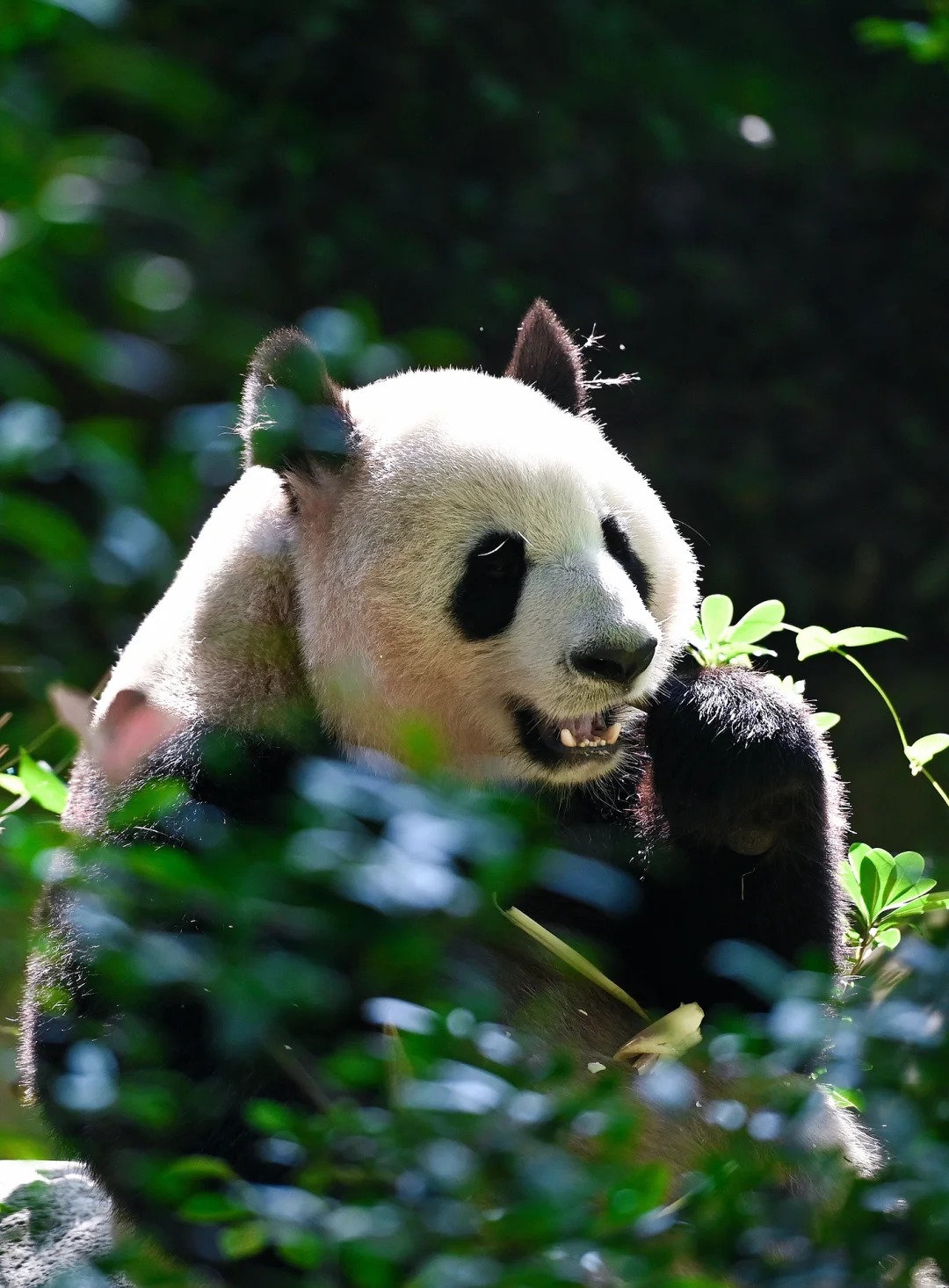Visiting Information
| Information | Details |
|---|---|
| Chinese Name | 成都大熊猫繁育研究基地 (Chéngdū Dàxióngmāo Fányù Yánjiū Jīdì) |
| Location and Address | 1375 Xiongmao Avenue, Northern Suburb, Chengdu, Sichuan Province, China |
| Opening Time/Hours | 7:30 AM – 6:00 PM (Last entry at 5:00 PM) |
| Entrance Fee | 58 CNY for adults, 29 CNY for children (1.2-1.4m tall), free for children under 1.2m |
| How to Get There | By Metro: Take Line 3 to Panda Avenue Station, then take bus 198 or 198A By Bus: Take bus 87 or 198 from downtown Chengdu By Taxi: Available from anywhere in Chengdu, approximately 30-40 minutes from city center |
| Best Time for Visit | March to May or September to November; Early morning (8:00 AM – 10:00 AM) for active pandas |
| Contact Info | Tel: +86 28 8350 8288 Email: [email protected] |
Overview
The Chengdu Research Base of Giant Panda Breeding, commonly known as Chengdu Panda Base, is a non-profit research and breeding facility for giant pandas and other rare animals. Located in Chengdu, Sichuan Province, China, it is one of the world’s most important centers for giant panda conservation and research.
Historical Background
The Chengdu Panda Base was founded in 1987 with six giant pandas rescued from the wild. Starting as a rescue and research center, it has grown into a world-renowned breeding and research institution. Over the years, it has made significant contributions to panda conservation, successfully breeding over 200 giant pandas and developing crucial techniques for panda care and reproduction.

Architectural Features
- Panda Enclosures: The base features specially designed enclosures that mimic the pandas’ natural habitat. These areas are spacious, filled with bamboo, and include both indoor and outdoor spaces to ensure the pandas’ comfort in various weather conditions.
- Giant Panda Museum: This educational facility houses exhibits on panda biology, ecology, and conservation efforts. The museum’s architecture blends modern design with traditional Chinese elements, creating an informative and visually appealing space.
- Swan Lake: A beautiful man-made lake that serves as both a scenic spot and a habitat for various bird species. The lake’s design incorporates natural landscaping to create a peaceful environment for visitors and wildlife alike.
- Research Facilities: The base includes state-of-the-art research laboratories and veterinary clinics. These facilities are designed to support the scientific work of panda conservation while allowing visitors to observe some of the research activities.
Cultural Importance
The Chengdu Panda Base plays a crucial role in Chinese culture as giant pandas are national treasures and symbols of China. The base not only contributes to panda conservation but also serves as an important educational center, raising awareness about wildlife protection and environmental conservation. It has become a source of pride for Chengdu and Sichuan Province, attracting millions of visitors annually and promoting cultural exchange through its international research collaborations.
Surrounding Attractions
- Chengdu Botanical Garden: Located near the Panda Base, this garden showcases a wide variety of plants, including many species native to Sichuan. It offers a peaceful retreat with beautiful landscapes and serves as an important center for plant research and conservation.
- Hongyuan Village: This nearby traditional village provides insight into local rural life and architecture. Visitors can explore authentic Sichuan-style houses and experience local customs and cuisine.
- Chengdu Shuangliu International Airport: While not a tourist attraction per se, the proximity of the airport to the Panda Base (about 30 km) makes it convenient for international visitors to include the base in their travel itineraries.

Photography Opportunities
- Panda Viewing Areas: Multiple viewing platforms and walkways offer excellent vantage points for photographing pandas in their enclosures. The best shots are often captured during feeding times or when the pandas are most active in the morning.
- Red Panda Habitats: The base also houses red pandas, which are more active and provide unique photo opportunities. Their agility and distinctive appearance make for captivating images.
- Swan Lake: This picturesque lake offers beautiful landscape photography opportunities, especially during sunrise or sunset. The reflections on the water and the surrounding greenery create stunning compositions.
- Bamboo Forests: The extensive bamboo plantations throughout the base not only serve as panda food but also create atmospheric backgrounds for photography, especially on misty mornings.
Modern Importance
- Conservation Efforts: The Chengdu Panda Base is at the forefront of giant panda conservation, developing breeding techniques and reintroduction programs that are crucial for the species’ survival. Its work has contributed significantly to increasing the wild panda population.
- Scientific Research: As a leading research institution, the base conducts important studies on panda biology, behavior, and ecology. This research not only benefits pandas but also contributes to broader wildlife conservation efforts.
- Public Education: The base serves as an important educational center, raising awareness about wildlife conservation among millions of visitors annually. Its programs and exhibits play a crucial role in fostering environmental stewardship.
- International Cooperation: Through its panda loan program and research collaborations, the base fosters international cooperation in conservation efforts. This has diplomatic significance, with pandas often serving as “ambassadors” for China.

FAQ
- What is Chengdu Panda Base famous for?
Chengdu Panda Base is famous for its giant panda breeding and research programs, as well as being one of the best places in the world to see giant pandas up close in a naturalistic setting. - What’s inside Chengdu Panda Base?
Inside Chengdu Panda Base, you’ll find giant panda enclosures, red panda habitats, a Giant Panda Museum, research facilities, a Swan Lake, bamboo forests, and educational exhibits about panda conservation. - Is Chengdu Panda Base free?
No, Chengdu Panda Base is not free. There is an entrance fee of 58 CNY for adults and 29 CNY for children between 1.2m and 1.4m tall. Children under 1.2m can enter for free. - Is Chengdu Panda Base worth visiting?
Yes, Chengdu Panda Base is generally considered very worth visiting. It offers a unique opportunity to see giant pandas in a well-maintained, naturalistic environment and learn about panda conservation efforts. - What to do in Chengdu Panda Base?
At Chengdu Panda Base, you can observe giant pandas and red pandas, visit the Giant Panda Museum, watch educational films, take a walk around Swan Lake, and potentially participate in special programs like being a volunteer panda keeper (additional fees may apply). - How do I get to Chengdu Panda Base in the local city?
In Chengdu, you can reach the Panda Base by taking Metro Line 3 to Panda Avenue Station and then bus 198 or 198A. Alternatively, you can take bus 87 or 198 directly from downtown Chengdu, or take a taxi which takes about 30-40 minutes from the city center. - How to visit Chengdu Panda Base?
To visit Chengdu Panda Base, plan to arrive early in the morning (around 8:00 AM) when the pandas are most active. Purchase tickets at the entrance or book in advance during peak seasons. Allow 2-3 hours for your visit, and consider hiring a guide for more in-depth information about the pandas and the facility.





